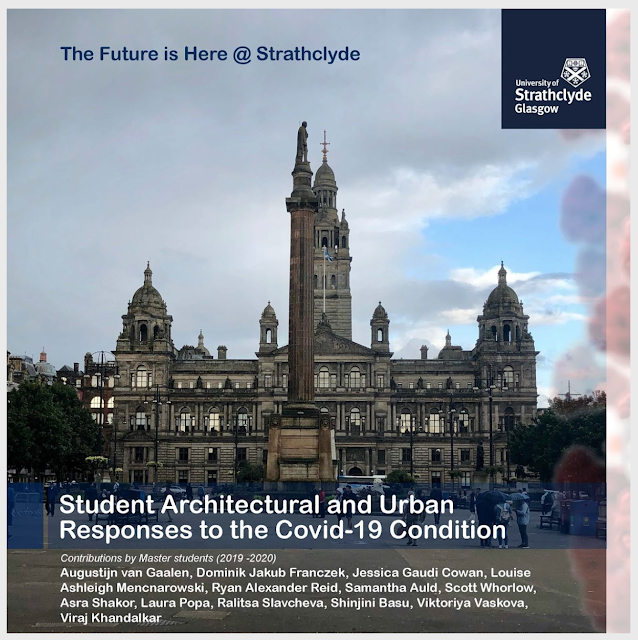The Future is Here @ Strathclyde: Student architectural & urban responses to the covid-19 condition.
with Ombretta Romice and Ashraf Salama.
Publication of the Department of Architecture, University of Strathclyde, Glasgow, United Kingdom, developed December 2020, published in March 2021. Download >>>>>
Students of our Department have a long-standing tradition of engagement with important current issues; they take their responsibility towards society and the environment extremely seriously. It was not surprising then to see how many of them decided to tackle the current pandemic, amongst many other important themes, in their final research piece before getting their Masters in September 2020.
Around 13 out of almost 100 students studied Covid-19 directly, whilst many more reflected on it as part of their work; they focussed on its impact on people and their relationships with space, they put it in the context of previous pandemics to understand practices and lessons, reflected on its potential long-term repercussions on how we produce, use and manage our everyday environments. Others looked at the first immediate consequence of the spread of this virus – the lockdown – to understand how the spaces that they will be called to design in their imminent careers, our housing and neighbourhoods, have managed in maintaining a good quality of life for everyone. Seven theses in particular have developed ideas which have scope for development, and this report describes them in detail in three main areas:
- Tools for a Responsive Urbanity
- Neighbourhood Preparedness in Managing Lockdowns and Supporting Community
- Adapting Learning Architecture and Design Practices to a Post-Pandemic Context








